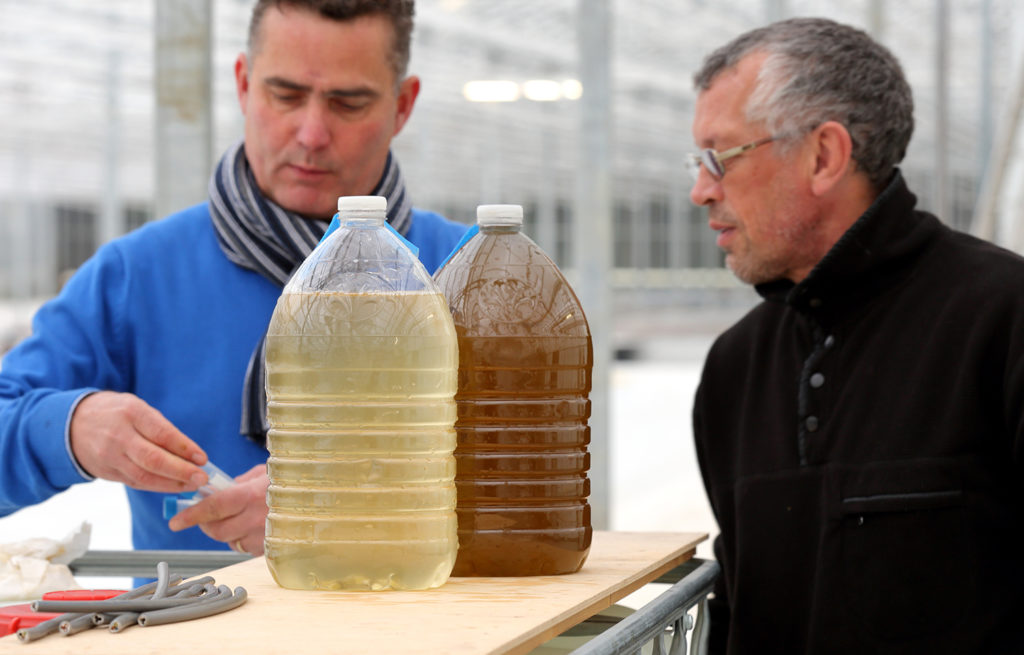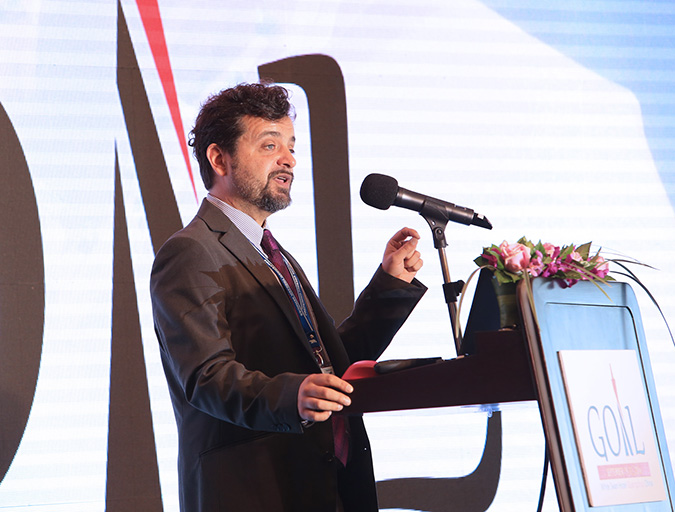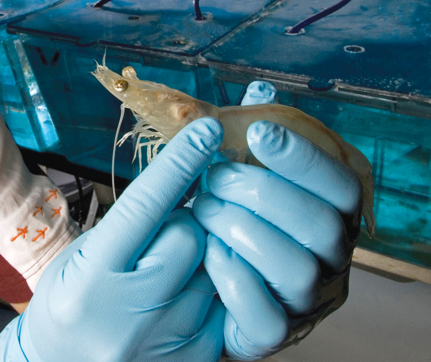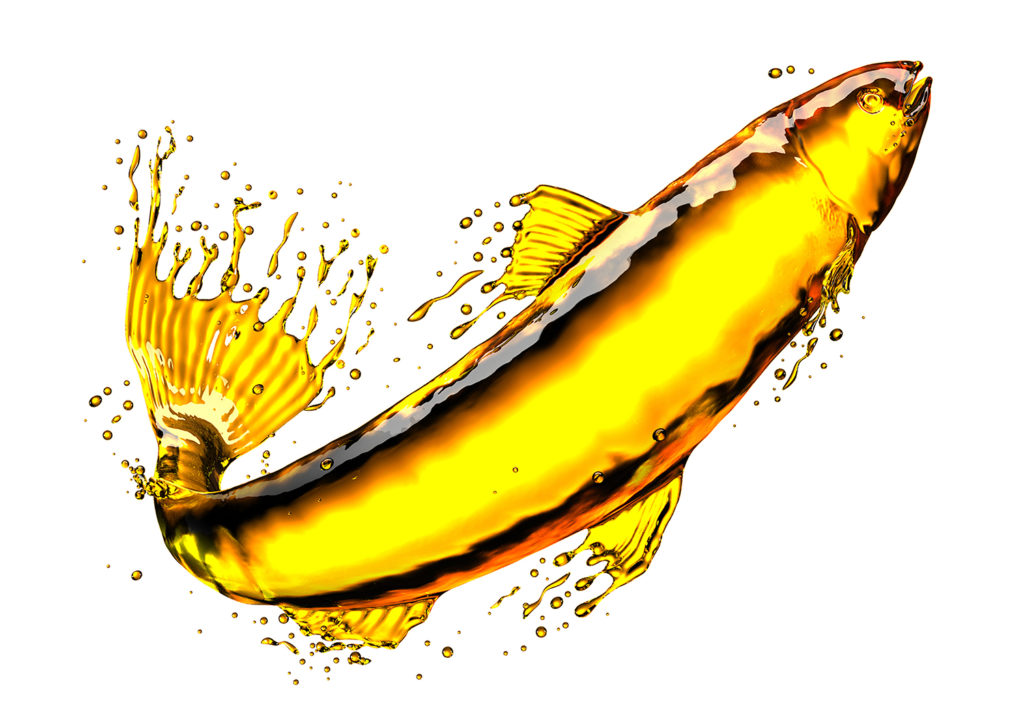Study looks at microalgal co-product in diets of juvenile Nile tilapia

As aquaculture expands, the proportion of farmed species fed commercial aquafeeds is also increasing. Developing sustainable feed ingredients in ways that add resilience to the global food system, therefore, is a major challenge for aquaculture, but the sustainable expansion of aquafeeds requires new ingredient alternatives.
Marine microalgae show promise as alternative aquafeed ingredients that can improve environmental sustainability and human health benefits. Marine microalgae production offers several advantages over terrestrial crops: improved land and water-use efficiency due to higher yields per unit input, no need for freshwater and arable land and lower greenhouse emissions. Many marine microalgae species contain large amounts of DHA or EPA, the omega-3 fatty acids that help prevent numerous human diseases.
This article – adapted and summarized from the original publication – reports on research studying the replacement of fishmeal with a protein-rich and EPA-rich co-product (lipid-extracted) of another marine microalga, Nannochloropsis oculate, in diets of Nile tilapia, a globally important aquaculture species.
We thank Qualitas Health, Inc. for donating Nannochloropsis oculata whole cells and co-product for this research; Alyssa Gao and Cameron Grimes, Dartmouth College, for work on lectin assays; and Brian Jackson, Department of Earth Sciences, Dartmouth for conducting analytical chemistry.
Study setup
The experiment included employed a completely randomized design of three diets X four replicates (tanks), with 12 static-water, 114-liter cylindro-conical tanks fitted with feces settling columns. Juvenile Nile tilapia (O. niloticus) were randomly assigned to tanks at a rate of 10 tilapia per tank, with a mean weight of 30 grams per fish.
A reference diet was prepared representing high quality tilapia feeds and it was combined with lyophilized N. oculata whole cells and co-product at a 7:3 ratio to produce two test diets. Qualitas Health Inc. provided the N. oculata whole cells and co-product.
We maintained a photoperiod cycle at 10 hours light and 14 hours dark and fed them the reference diet during a seven-day acclimation period. After randomly assigning the three diets to twelve tanks, the fish were acclimated to experimental diets for seven days before initiation of feces collection. Fish were fed fish two times daily and uneaten pellets were collected directly after each feeding to minimize potential artifacts in the fecal samples. Water quality was monitored and 50 percent of a tank water was replaced if total nitrogen or nitrite reached above 3.0 mg/L or 0.025 mg/L, respectively, or twice per week. Water temperatures were kept within 27.0 to 28.0 degrees-C.
For additional details on the experimental design and methods for digestibility study with N. oculata whole cells and co-product; feed formulation and preparation; fecal collection; chemical analysis and calculations; biological sampling and tissue collection; and statistical analyses, please consult the original publication.
Results and discussion
Results of the 84-day growth experiment using the N. oculata co-product showed that replacing 33 percent of fishmeal with the N. oculata co-product achieved final weight, weight gain, percent weight gain, specific growth rate (SGR), and protein efficiency ratio (PER) that are comparable to the reference diet but that higher inclusion levels lowered these fish performance measures. Higher inclusion levels of N. oculata co-product, however, did not depress feed conversion (FCR), feed intake (FI), and fish survival, given that we observed no significant differences among the diets. Also, tilapia showed high palatability to N. oculata co-product diets, feeding equally well on these diets as on the reference diet.
Our digestibility study found that the N. oculata co-product is a highly nutrient-dense feedstuff compared to N. oculata whole cell and offers the highest digestibility of lysine, an essential amino acid that is often deficient in terrestrial crop meals used in aquafeeds. We also detected the highest 20:5 omega-3 EPA digestibility in the co-product (97 percent), indicating that it would be a good candidate for EPA supplementation in tilapia diet formulation. Results show that, even though N. oculata co-product contains higher amounts of protein compared to N. oculata whole cells, the co-product had significantly lower digestibility values for crude protein than whole cells.
Results from our nutritional feeding experiment showed – when compared to the control diet – good growth, feed conversion and survival of tilapia fed a diet replacing 33 percent of fishmeal with N. oculata co-product, but decreased fish performance at higher inclusion levels. These findings indicate a need to improve nutrient digestibility in order to achieve a higher replacement level. This is the first report of the effects of different inclusion levels of a micro-algal co-product in tilapia diets.
Our digestibility results show that the N. oculata co-product contained higher amounts of protein compared to N. oculata whole cells (50 percent vs. 38 percent) but had significantly lower digestibility values for crude protein than the whole cells (74 percent vs. 81 percent). Our reported apparent digestibility coefficients (ADC) of crude protein in the N. oculata whole cells ingredient is comparable to levels reported for other microalgal whole cells in tilapia diets.
The ADC of crude protein in the N. oculata whole cells and N. oculata co-product ingredients were lower than some other commonly used proteins sources such as Spirulina, fishmeal and soybean meal. But it was higher than the ADC of crude protein in some crops used as protein and carbohydrates sources, including corn, broken rice, sorghum, wheat middlings and rice bran, which have ranged from 57 percent (sorghum) to 73 percent (corn) in tilapia. These digestibility results are promising regarding the higher digestibility of lysine, which is one of the most deficient amino acids in terrestrial protein used for aquaculture feed.
If algae biomass is produced and made available in larger quantities, it could become cost competitive or cheaper than crystalline amino acid supplementation, provided it shows adequate digestibility in the farmed animals. For Nile tilapia, we observed significantly lower ADCs of methionine in the N. oculata co-product than in N. oculata whole cells (64.1 percent vs. 88.1 percent) but higher lysine digestibility in N. oculata co-product (81 percent) compared to N. oculata whole cells (76 percent). Future research is needed to identify why ADCs for both amino acids differed between whole cells and co-product.
Our findings highlight the need to better understand how anti-nutrients in microalgal co-product limit inclusion rates in aquafeeds and to identify practical steps to improve nutrient digestibility to achieve higher replacement levels. The observed reduction in nutrient digestibility could be due to the high content of complex indigestible cell wall non-starch polysaccharides (NSPs) in the microalga.
Consistent with many aquaculture studies, we found that dietary fatty acid composition was mirrored in the fatty acid profile and composition of edible fillet tissue of Nile tilapia. Similar levels of fish oil, total omega-6 polyunsaturated fatty acids (PUFA) and total omega-3 PUFA in all formulated diets resulted in similar levels of major omega-3 and omega-6 PUFAs in fillets of fish across all the diets. This lack of difference in fillet composition suggests that tilapia utilized nutrients in the N. oculata co-product as efficiently as they used nutrients in fishmeal. Also, tilapia fed the reference diet for 84 days yielded 2.2 mg total EPA+DHA per gram of raw fillet, suggesting that the N. oculata co-product would be a good candidate for EPA supplementation in tilapia diet formulation.
Perspectives
Information about levels of nutrients and anti-nutrients and estimation of nutrient digestibility are the key steps to evaluate a new ingredient for fish growth. In our study, we determined levels of nutrients and anti-nutrients of dried whole cells of N. oculata and its co-product; digestibility of their nutrients for tilapia; effects of different proportions of fishmeal replacement with N. oculata co-product on fish growth; and flesh omega-3:omega-6 ratios that are beneficial for human health.
Microalgae-based diets are currently in the preliminary development stage for aquafeeds. Achieving wide use of such a nutrient dense N. oculata co-product in fish feeds requires researchers to find ways to enhance nutrient digestibility. Developing highly digestible algal ingredients will both improve feed conversion ratios and reduce nutrient loads in fish culture effluents, while also helping drive algae-based aquafeeds towards cost-competitiveness with conventional feed. Towards this goal, we are now focusing on whether the inclusion of one or more non-starch polysaccharide and protease enzymes in N. oculata co-product diet enhances nutrient digestibility and retention and growth and reduces effluent nutrient loading in Nile tilapia.
The aquafeeds industry will use microalgal co-product as a nutrient source only if it is a highly digestible ingredient that improves feed conversion ratios and reduce nutrient loads in fish culture effluents. Also, microalgal co-products also must become cost-competitive with conventional protein sources for aquaculture feeds, and innovative business models by leading microalgae companies are emerging to meet this challenge.
Now that you've reached the end of the article ...
… please consider supporting GSA’s mission to advance responsible seafood practices through education, advocacy and third-party assurances. The Advocate aims to document the evolution of responsible seafood practices and share the expansive knowledge of our vast network of contributors.
By becoming a Global Seafood Alliance member, you’re ensuring that all of the pre-competitive work we do through member benefits, resources and events can continue. Individual membership costs just $50 a year.
Not a GSA member? Join us.
Authors
-
Pallab K. Sarker, Ph.D.
Environmental Studies Program
Dartmouth College
Hanover, New Hampshire, USA -
Anne R. Kapuscinski, Ph.D.
Environmental Studies Program
Dartmouth College
Hanover, New Hampshire, USA -
Ashley Y. Bae
Environmental Studies Program
Dartmouth College
Hanover, New Hampshire, USA -
Emily Donaldson
Environmental Studies Program
Dartmouth College
Hanover, New Hampshire, USA -
Alexander J. Sitek
Environmental Studies Program
Dartmouth College
Hanover, New Hampshire, USA -
Devin S. Fitzgerald
Environmental Studies Program
Dartmouth College
Hanover, New Hampshire, USA -
Oliver F. Edelson
Environmental Studies Program
Dartmouth College
Hanover, New Hampshire, USA
Tagged With
Related Posts

Innovation & Investment
Algae innovators aim to freeze out early-stage shrimp losses
A greenhouse in Belgium believes its innovative shrimp feed product, made from freeze-dried microalgae, packs the necessary nutrients for the crustacean’s most vulnerable life stage: the first three days of its life.

Aquafeeds
Aquaculture Exchange: Giovanni Turchini, Deakin University, part 1
One of the world’s leading fish nutrition experts talks about how aquaculture can learn to survive, and even thrive without depending on fishmeal and fish oil. It’ll take a lot of innovation, but Giovanni Turchini is confident that the industry is on the right path.

Aquafeeds
Biofloc: novel sustainable ingredient for shrimp feed
Recent research is demonstrating that biofloc-based proteins are suitable replacements for fishmeal in aquaculture diets. Since bioflocs can be produced while treating aquaculture effluents, a waste product can be converted into a valuable resource.

Aquafeeds
Fish oil alternatives are waiting in the wings
The Future of Fish Feed (F3) initiative aims to jumpstart innovation in terms of viable fish-free substitutes to fish oil through the global F3 Fish Oil Challenge.


